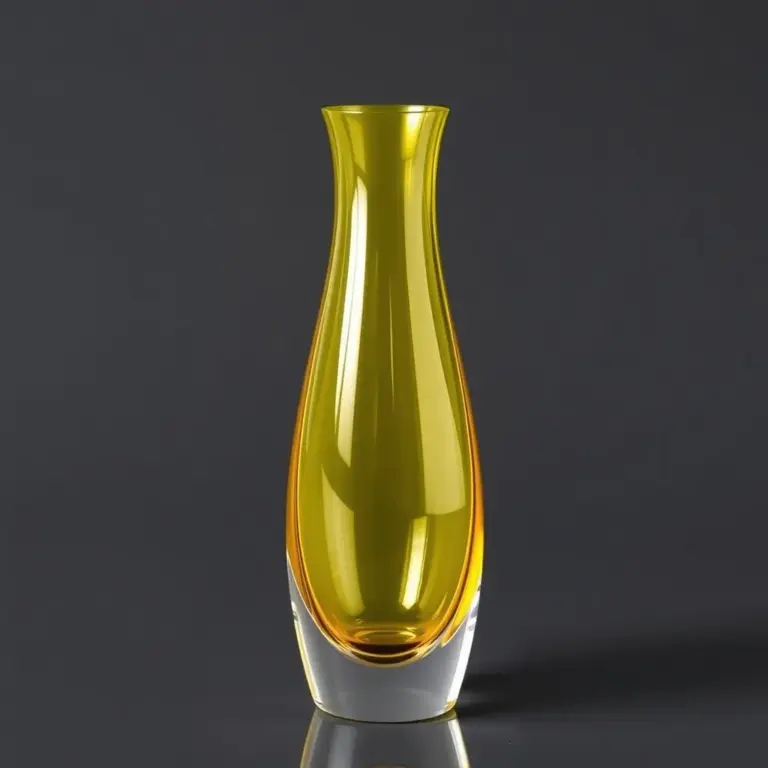> Blogs > A Craftsman’s Perspective on the Crystal Narrow-Mouthed Vase Molding
A Craftsman's Perspective on the Crystal Narrow-Mouthed Vase Molding
Core keyword: crystal narrow-mouth vase molding
In the refined world of glassware manufacturing, crystal narrow-mouth vase molding represents a delicate balance between precision engineering and artistic intuition. This method requires both the mechanical stability of industrial processes and the subtle touch of an experienced artisan’s hand. From controlling molten glass flow to ensuring optical clarity, every step reflects decades of accumulated expertise.

The Process Behind Crystal Narrow-Mouth Vase Molding
At its core, crystal narrow-mouth vase molding involves shaping the molten crystal into a slender-neck form using heat, pressure, and carefully engineered tooling. The narrow opening demands meticulous temperature control to prevent deformation, while the curvature of the neck must align perfectly with the vase body for seamless visual harmony.
Manufacturers often combine hand-blown glass techniques for unique, limited-edition pieces and large mold pressing for consistent high-volume production. This hybrid approach allows for versatility without compromising on either aesthetic detail or structural strength.
Insights from the Workshop
“People think the challenge is in the firing temperature,” says Master Li, a veteran craftsman with over 30 years in the trade. “But the truth is, in crystal narrow-mouth vase molding, it’s the neck alignment that keeps you awake at night. A deviation of even 1 millimeter will throw off the whole profile. “The mold may be perfect, but if you’re timing when pulling the glass isn’t right, the final piece will feel ‘off’ to the trained eye.”
This sentiment is echoed by younger artisans experimenting with hand-blown glass techniques. They often integrate micro-adjustments mid-process—subtle twists or extensions—before transferring the semi-formed vase into the large mold pressing stage for refinement.
Industry Trends and Data Points
Business Research Insights estimates that the global luxury crystalware market will be worth about USD 5.94 billion in 2024 and is expected to reach USD 9.43 billion by 2033, reflecting a CAGR of roughly 5.2%. While crystal narrow-mouth vase molding occupies only a small segment of this market, its high craftsmanship value positions it as a niche product with strong collector appeal.
In regions like Europe and Japan, the narrow-mouth form aligns with minimalistic floral design trends, further driving demand for both handcrafted and precision-pressed variations.

Technical Challenges and Solutions
The primary difficulty in crystal narrow-mouth vase molding lies in balancing cooling rates across different sections of the vase. If the neck cools too fast, it risks micro-cracking; too slow, and the form may slump. Large mold pressing operations now use CAD-optimized mold geometry to ensure even cooling, reducing defect rates by up to 12 %.
Meanwhile, hand-blown glass techniques allow for intentional variations in wall thickness, creating organic patterns of light refraction—features that machine-only methods cannot replicate.
Final Thoughts from the Bench
“Every vase has its own ‘moment’ where it decides whether to be perfect or not,” Master Li reflects. “You can measure, calibrate, and standardize all you want, but there’s a heartbeat in the glass you have to listen to.”
This philosophy underscores why crystal narrow-mouth vase molding remains an enduring art form even as manufacturing technology advances. It’s a craft where precision tools meet human instinct, and both are equally vital.
Currently, SHD Crystal is in close communication and production with partners in Northern Europe and the United States. If your design team is exploring ways to merge artisanal methods with industrial efficiency, our specialists can collaborate to develop crystal vases that embody both technical excellence and aesthetic beauty. Contact us to discuss your next project.


- : info@shdcrystal.com
- : +86-755-2335 8353
- : No. 68 Shasong Road, Shajing Street, Bao'an District, Shenzhen, Guangdong Province
Follow us